Oculus Rift
Upon release, the Oculus Rift felt like a game-changer. One of the first VR headsets to prove that VR could be a highly immersive and enjoyable experience – one that even people with the right PC set-up could experience at home.
That’s changed now the original Oculus Rift is nearly five years old and has since been surpassed by the Oculus Rift S, which is our current favorite runner-up best VR headset behind the Valve Index.
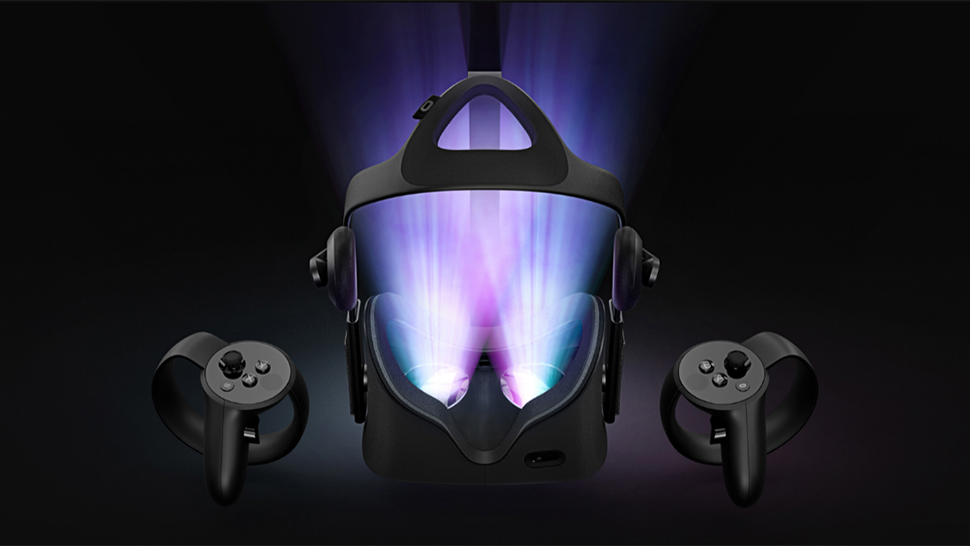
When it first launched in 2016, the Oculus Rift promised to change the world of gaming forever. and while it hasn't quite done that (at least not yet), the virtual reality landscape has slowly matured and becomes an even more attractive proposition over time.
A number of significant changes and upgrades have been added to the Oculus Rift over the years – even though now it’s not available via Oculus but through third-party sellers.
For example, some high-profile games have launched on the hardware, and it's received motion controllers in the form of Oculus Touch (one of the most crucial upgrades since launch day).
Another big change is that the Oculus Rift now requires Windows 10 to run all new and upcoming features and apps. The headset still supports Windows 7 and 8.1, so users with those systems can continue to play existing games, but come time for new releases, they could be out of luck.
While some users aren't best pleased, Oculus points out that Microsoft no longer provides mainstream support for Windows 7 and 8.1, so only Windows 10 can meet its “performance standards” going forward. Oculus also says the majority of Oculus Rift owners already run Windows 10.
Although since the launch of the original Oculus Rift there have been a number of competing virtual reality headsets launched, including headsets by Oculus itself, like the Oculus Rift S or standalone Quest and Quest 2, the original Oculus Rift is still a very capable VR headset for gaming, and now it’s no longer officially available from Oculus, you can find some tempting deals.
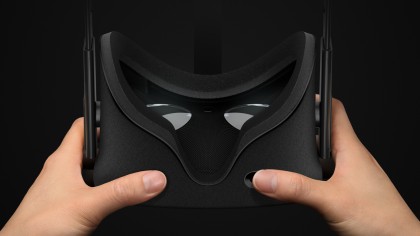
OK, before we dive too deep into the virtues of VR, let's take a moment to talk about the two most important aspects to consider before deciding to buy a Rift of your own: price and the minimum PC requirements.
If you've been following the virtual reality scene you probably know this already, but the Oculus Rift requires a wired connection to a PC in order to have enough power to drive two 1080 x 1200 resolution images to each lens inside the headset. It can't just be any old run-of-the-mill PC, either – you're going to need a top of the line gaming PC to enjoy everything the Rift has to offer.
Originally, the minimum specs put out by Oculus called for an Intel Core i5 4590 or equivalent processor, 8GB of RAM and an NVIDIA GTX 970 or AMD Radeon 290 video card. Most of the hardcore gaming community might already have these components on hand, but if you're a casual gamer or currently more of a PC layman, these parts will be the first of two costly investments you need to pay for upfront.
Recently, however, that minimum spec has been brought down to an Intel i3-6100, instead of the more expensive Intel i5-4590, and GPUs can now start from the Nvidia GTX 960 from the recommended 970.
That change brings down the cost of the system required to play VR games to around $499 by Oculus's estimates, and it now partners with a number of PC manufacturers to promote Rift-ready computers.
The other expenditure is the Oculus Rift itself, duh.
When paired with the proper hardware, the Oculus Rift is far superior to PlayStation VR, and light years ahead of Google Cardboard and Samsung Gear VR, both of which only rely on the power of your cell phone to gaze into the plane of virtual reality. It's not quite as immersive or as capable as the HTC Vive, but I'll touch on that point more in a bit.
So, what exactly are you buying? What does the Oculus Rift do?
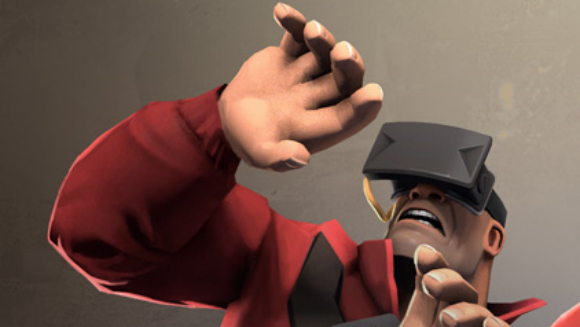
Price and availability
Since it was first launched the Oculus Rift has had a number of price reductions. Now there isn’t a fixed price as it’s available through third-party sellers only, but at the time of writing, you can pick one up for US$399 / £399 / AU$399. That’s generally for the headset, two sensors and the Touch Controllers.
For comparison, you can now get your hands on an Oculus Quest 2 – the newest standalone headset from Oculus that isn’t powered by a PC – for £299 / $299 / AU$479 (64GB) and the Oculus Rift S – the upgraded Oculus Rift – from $399 / £399 / AU$649.
How the Oculus Rift works
I've tried my best to explain virtual reality in words and, on multiple occasions, have completely and utterly failed. At best all I can do is paint a half-cocked image in hopes to inspire you to go out and find a friend or coworker with an Oculus Rift of their own who'd be kind enough to let you give it a whirl. Here goes nothing.
Imagine standing on the ledge of a 100-story building. Imagine looking down at the street below you. Imagine the tightening of your stomach and the sense of dread that you might, at any second, fall to your demise.
Now imagine taking one step forward.
You're falling and the world is whipping before you. You're petrified. But you also feel alive. The second right before you hit the ground is the worst – your brain is actually prepared for the moment by dumping adrenaline into your system as a mild painkiller.
But while all this is happening, you haven't actually moved. You've been sitting in a chair in your own home, staring into a screen. Your biometrics have changed, but, geographically speaking, you're exactly where you were 10 minutes ago.
This is what it's like to use virtual reality, to get the experience of being somewhere else in a different time, a different place, sometimes as far as an alien world, all without ever leaving your home.
This product is the fruit of a four-year research project that launched on Kickstarter, made $2 million, then was purchased by one of the most powerful tech companies in the world, Facebook. The Oculus Rift shipping these days is the first commercially available unit – the fourth evolution of the headset that started back in 2012 with Developer Kit 1.
The latest iteration of the headset is significantly better than any of the previous development kits. It's easier to setup thanks to an intuitive program that you're prompted to download when you plug it in, and it now takes less technical know-how to install games and troubleshoot when things go awry.
Like other virtual reality headsets, the Oculus RIft has the arduous task of completely immersing you in a video game by producing two images simultaneously. It does this by hooking into the back of your graphics card's HDMI port and using a camera to track your head movement.
You can either sit or stand while wearing the headset, whichever you find more comfortable, and thanks to recent updates the Rift can now track you around a small room too, as with the HTC Vive (what we commonly refer to as "room-scale VR").
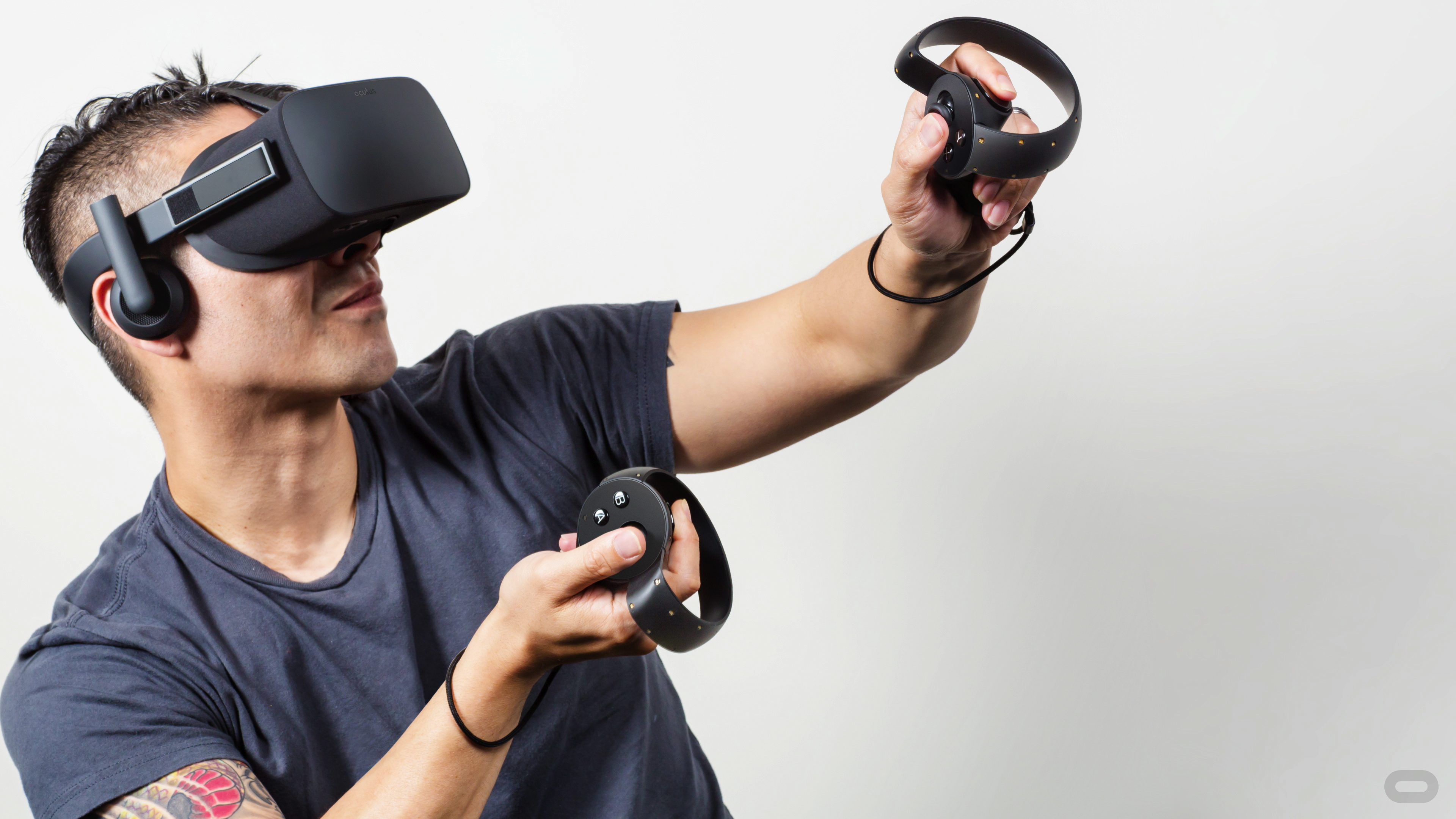
What you'll get inside every Oculus Rift box is the headset itself, two Oculus Sensors, two Touch controllers, seven free VR apps (including Lucky's Tale and Robo Recall), and all the cables you need to hook up your headset.
Once you've plugged the headset into the HDMI port on your GPU, the two USB cables from the headset and sensor to two USB 3.0 ports on your PC, and the Xbox One controller adapter into a USB 2.0 port on your PC, you're ready to start the short and simple setup process, which only takes about 10 minutes.
What you'll find when you're done is a library of about 100 titles that are longer than anything found on the HTC Vive. I've played a good deal of them, and while some are better than others, there weren't any that I felt were a waste of time or money. I'll cover them in more detail on the next page but, in the broadest of strokes, the Rift is a fun gaming system, even if it's not number one right now.
It's almost scary how far the Oculus Rift has come in such a short period of time.
The prototype headset we tested just a few years ago felt rough, cheap and borderline shoddy. It didn't track well and trying to get lag-free gameplay – even on a powerhouse gaming rig – was just short of impossible.
The final consumer version of the headset on the other hand is an elegant, sleek and, dare I say, stylish black brick you stick on your face. You may not look great wearing it, but the actual hardware can't be faulted for aesthetics.
When you first hold it, it's not weighty – in fact, it almost has a hollow feel, like all the weight has been put into the chassis and there's nothing but glass and thin film inside. Put it on, however, and those expectations of fluffy weightlessness will all go away.
When you're sitting down, the visor portion will weigh heavy on the front of your head. It's not something you notice immediately, but you will feel it in your neck the longer you're immersed in your new virtual world.
Thankfully, it doesn't necessarily dig in thanks to dense foam, but when the Oculus Rift is tightened to the proper point, it's a snug fit. There are foam cushions on the back portion of the strap, too, so the back of your head rests in a cushy cradle.
The straps are a bit on the rigid side. They're made from bendable plastic that has some give, but overall holds its shape. Then there's Velcro located on each strap that you use to adjust the position of the headset on your face.
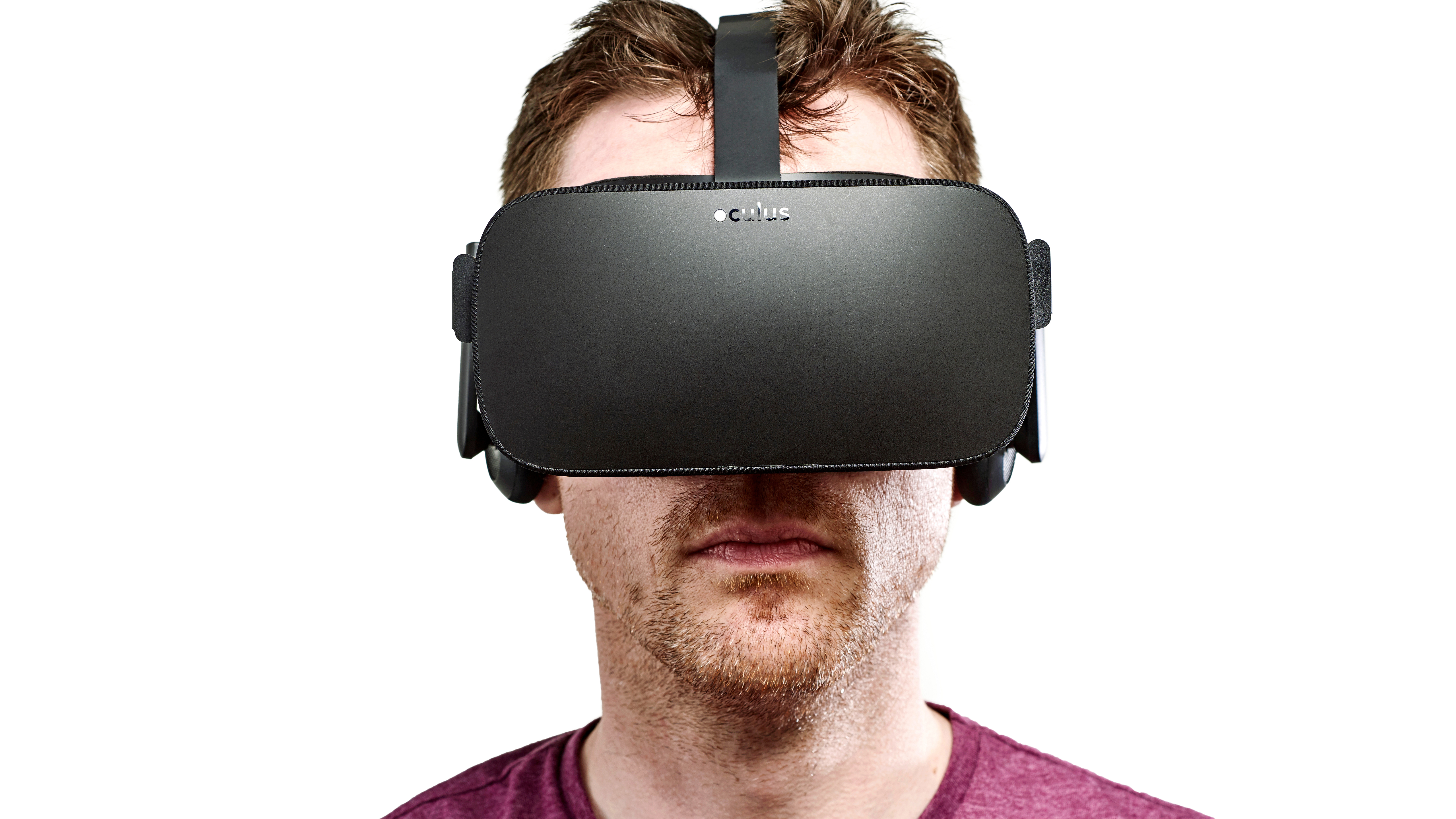
These straps are absolutely vital as the Rift needs to be positioned properly on your face, otherwise the focus in the VR experience is off. This will happen if the headset is hanging a little loose or isn't centered, creating a blurred effect. Too tight, and while the headset is secure and the focus generally spot on, it tends to be uncomfortable. When this happened, it never got to the point where I needed to take the headset off to escape the discomfort, but it ached slightly, and left a headset-shaped impression on my face.
The opposite problem isn't good, either. When it's too loose, gaps allow light to come through from underneath the faceplate. Light will peek through and games will suddenly lose some of their immersiveness when you can see your hands working on the Xbox controller.
But sight is just one of the senses that needs to be transformed to feel fully immersed in virtual reality. The other, as you might guess, is hearing.
To address this, Oculus includes a pair of small ear pads that sit flush on the side of the headset. They can be rotated to sit directly on top of the ear, or flipped up when someone needs your attention back in the real world. I find, for the most part, that the headphones provided with the Rift work well. They offer 3D surround sound and have enough clarity to clearly hear all the in-game audio cues.
The only real problem I had with the headphones is that they randomly disconnect from time to time. I'll be in the middle of a game when, all of a sudden, the sound completely cuts out.
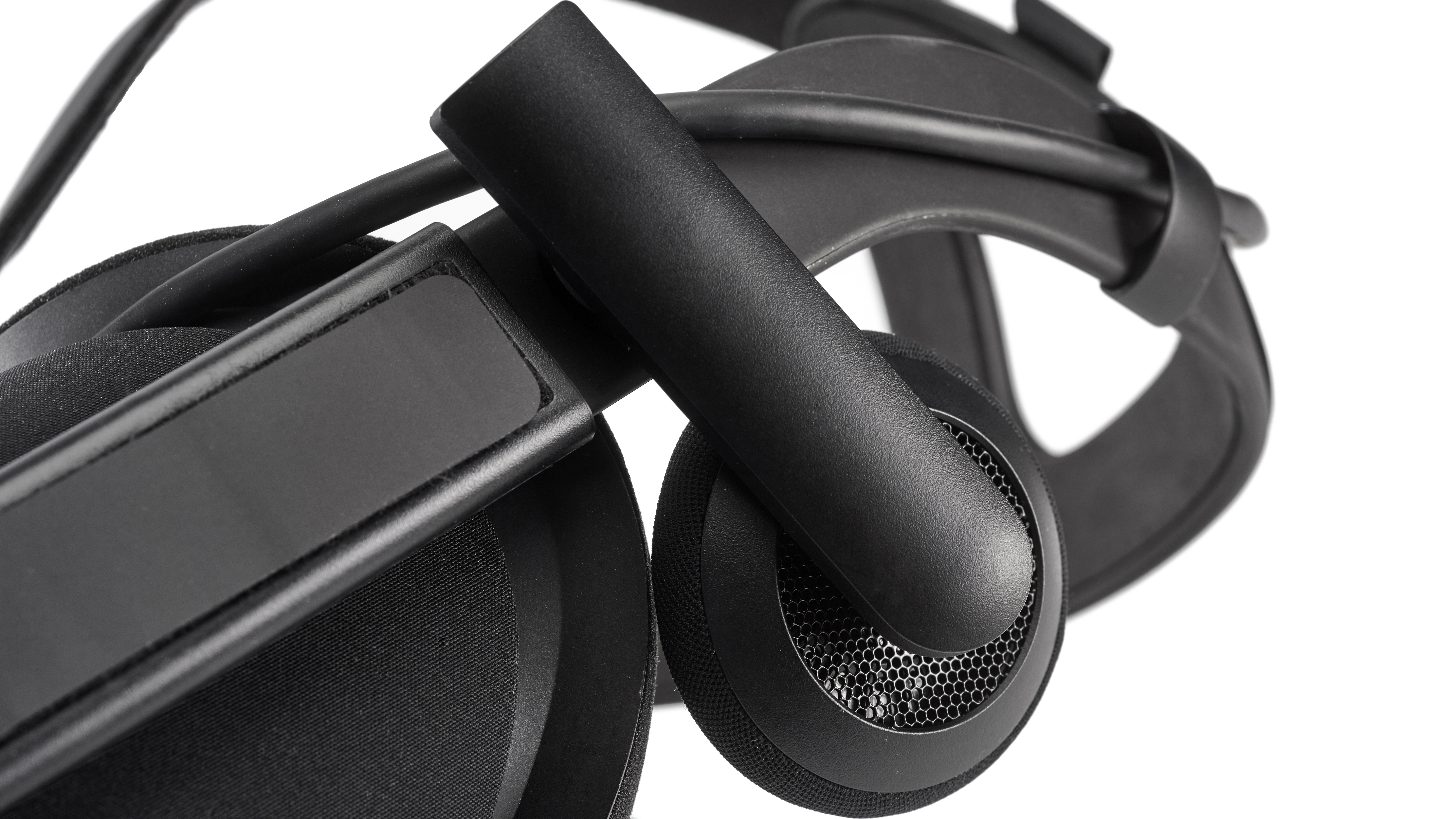
However, like the HTC Vive, the Oculus Rift allows you to use your own headphones instead of forcing a pair on you. I picked a pair of Creative Sound Blaster H5s due to their padding and excellent sound quality, and using an external pair of cans eliminated any issues I had with the sound cutting out. You can plug the headphones into your computer's audio jack or, if you're sitting too far from your PC, straight into the 3.5mm jack on the Xbox One controller.
The other benefit of using your own pair of headphones, especially one with a volume slider on the side or in the cord, is that it makes it easier to manage the volume when it's too loud or too soft. (Though, admittedly, it's almost always the former.)
However, Oculus recently introduced a third option into the mix – Oculus Earphones. These in-ear earbuds replace the on-ear pads that shipped with the original system and promise VR-compatible drivers for more immersive experiences and better noise isolation for only $49 / £49.
Another piece of the original puzzle was the Xbox One controller. Now, there's nothing inherently wrong with Microsoft's excellent gamepad – as far as controllers go, it's probably the best, but virtual reality is no place for a standard controller.
Thankfully, that makeshift stop-gap has now been replaced by the proper Oculus Touch controllers, which are a much better fit for managing everything in VR. If you need to buy a pair separately, they cost $99 / £99.
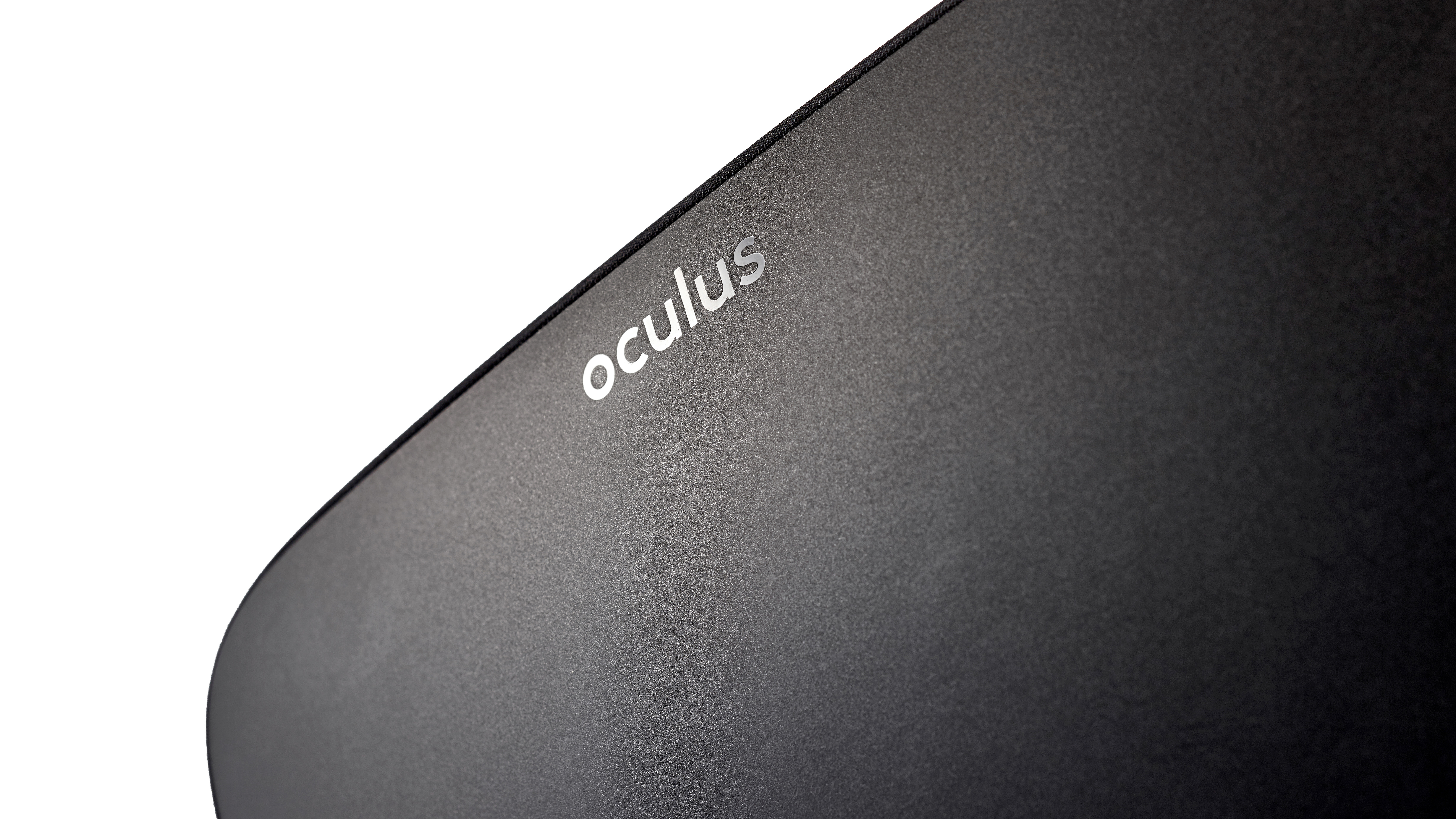
Most games work much better with the Touch Controllers than with the Xbox One controller, which can occasionally create a sort of cognitive dissonance: it feels like you're moving, but your body is just sitting there, creating a sinking feeling in your stomach. The Rift isn't anywhere close to Nintendo's Virtual Boy system that caused seizures back in the '90s, but it's not ideal.
The last important part is the long strand of cables connecting the headset to the PC. It comes out the rear of the headset and curves over your back or shoulder, so you can then hide it behind your chair. When you're sitting or standing, the cord doesn't get in the way, but if you're attempting to go for complete Matrix-style immersion, it's something you can constantly feel.
Oculus Rift: Performance and content library
OK, so far everything we've talked about applies to every Oculus Rift setup out there. Here's where we start to venture into "your miles may vary" territory.
What I've found, using a properly spec'd PC, is that performance is rock-solid. I never noticed a screen tear or a dropped frame in any of the games I played. That speaks volumes about the kind of quality control Oculus is exerting on the games that come to its svelte storefront, and again how far this hardware has come in just a few short years since the Kickstarter campaign.
Tracking, done through the included Oculus Sensor, is fairly sturdy, too. You're able to turn your body more than 180 degrees and it will still recognize what you're doing. The sensor sits about 10 inches above your desk and can be tilted up or down, depending on what position you're currently in.
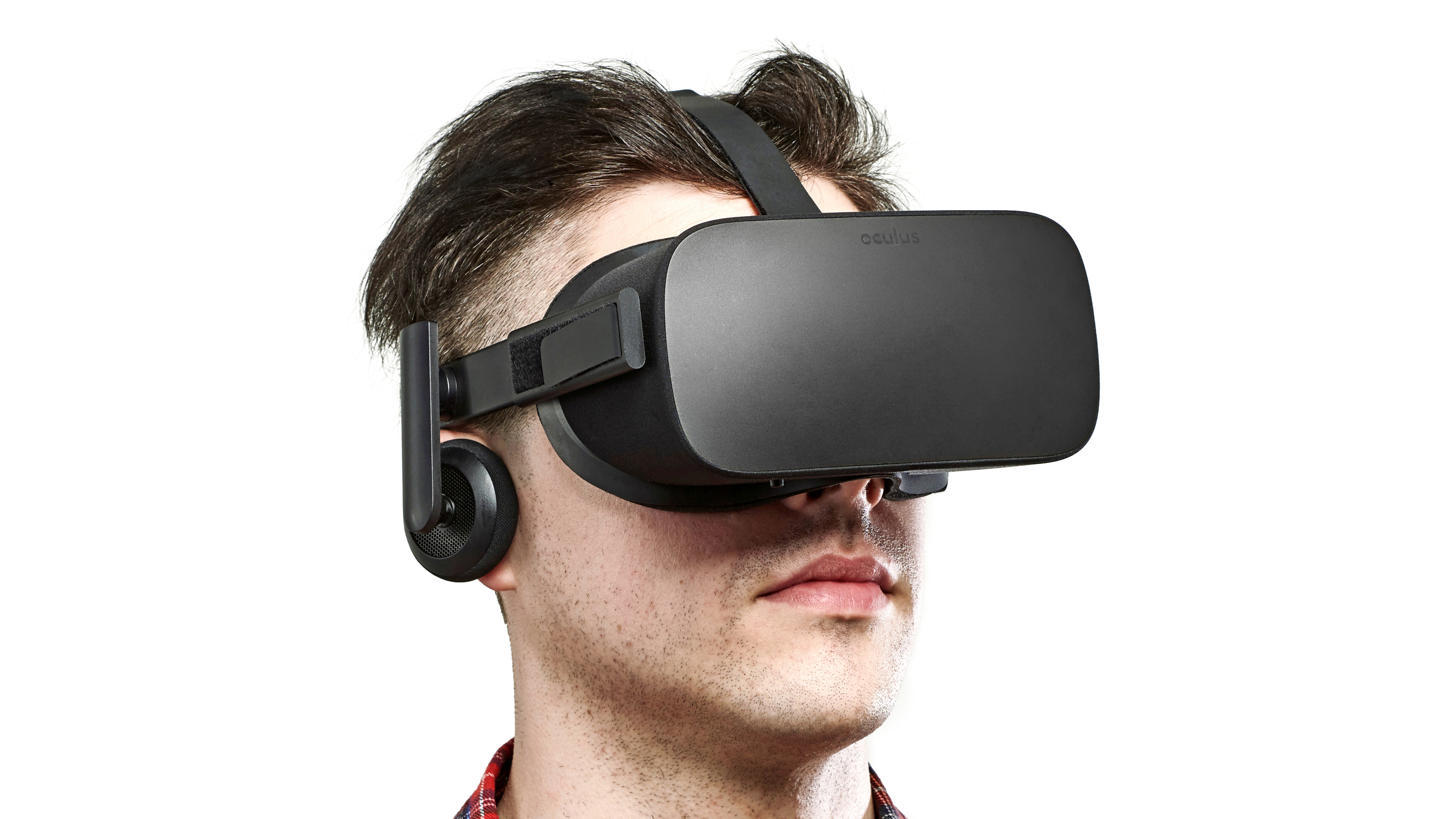
Take off the headset and the visor shuts off. Pick it up and put it on, and the screen will light back up. The external and internal sensors are pretty smart, thankfully, meaning you won't need to manually switch the headset on when you want to use it.
What the sensor can't track, at least when you're not holding the Touch Controllers, are your hands. And that's a deal breaker.
I can't tell you how many times I wish the Rift shipped with Touch Controllers while playing games on the headset. Using a controller to move a bumper in air hockey simply feels unnatural. Making them an optional upgrade for the many thousands who already pre-ordered and own an Oculus Rift is a major faux pas.
There's a level of intuition that comes from using your hands. You know how to throw a ball, how to climb a rock wall and shake hands in real life. Translating the most basic of movements to a controller is imperfect at best and convoluted at worst, especially if you're someone who doesn't frequently use an Xbox One controller.
Moreover, because every game seems to be shoehorned to work with a controller, it feels like you could take almost any game on the Oculus storefront and port it over to an Xbox One without actually losing anything.
And while some of those games are really fun, immersive experiences, some of them – even the first-party titles – are plain gimmicky. Like looking into a 2016 version of our childhood Viewfinder, animated images will run up to you, roar in your face or threaten you to elicit a psychological response. It's a shallow parlor trick, similar to watching the first movies in 3D.

This is made up for, somewhat, by the huge selection of well thought out titles. All the games you've been drooling over are here: EVE Valkyrie, Elite Dangerous and ADR1FT are all available on the store, with plenty more arriving regularly. Even more exciting, though, are that there are plenty of games that work with the Rift that aren't on the store, including family-favorite Minecraft.
Oculus sorts games by how much motion there is in the game, and how likely it is to make your stomach churn. There are three set levels: comfortable, moderate and intense. Comfortable games barely require moving your head and, if you do, you do so slowly. Moderate steps it up a notch. You'll either need to move more quickly or be faced with more moving objects. Finally, intense games will probably be the ones that do you in. These stick you on the side of a mountain or floating around haphazardly in space; they're more visceral of experiences, but ones that are more likely to provoke anxiety and induce nausea, too.

As this is a new medium, pricing for said games is all over the place. Some games are appropriately priced in the $4.99-$9.99 space, while others come in at $40 or $50 (about £35.37, AU$66.57) for what are essentially extended demos. As of right now there's also no way to try any of the games before you buy them, which means you'll need to make a leap of faith when purchasing.
Speaking of payment, Oculus will prompt you to enter your credit card information as soon as you have your system setup, but will allow you to skip past it if you're not quite ready to hand over your digits sight unseen.
Switching between one game/movie/app and the next is a relatively painless process. The home screen is actually a swanky living room replete with a fireplace, a couch and high-res pillows that throws a standard Xbox-looking interface in the middle of the room. (I'm pointing out the ridiculous nature of having a domestic-looking home screen here, obviously, but the interface that you use to peruse the storefront is actually very well designed.)
While you're able to buy games without ever leaving the confines of the luxurious home screen, some titles require you to take off the headset to complete the installation. And, yes, in practice it's just as annoying as it sounds.
Out of all the questions I was asked over the two weeks that I tested the Oculus Rift for, the most frequent ones were, "What is it like to spend a few hours in virtual reality?" and "Will it make me sick?"
Well, for starters, I should probably point out that even though games, movies and images are in high-resolution, you'd never struggle to tell the difference between what you're seeing on the Oculus Rift and what you're used to seeing in the real world.
That's not to say it breaks the immersion when you're in a VR world or even that it's overly grainy or pixelated – it's not. But objects in games aren't always completely clear when you really look at them. Now, that's a different story for local media played inside the headset via a virtual TV set up in a faux-living room, but in reality, I'm not sure putting a 1080p image on a $600 headset is a feature worth writing home about.
At this stage, at least, it's easy to tell the virtual world from the real one. For some people, that might make the Rift come off as more of a novelty, like Nintendo's Wii, rather than the ground-breaking innovation that all those critics I mentioned at the beginning see it as.

As for the question about feeling sick while using virtual reality?
The short and sweet answer is yes, it probably will make you sick. Some of you, even the most hardcore of hardcore who play games for seven or eight hours a day, might feel like the world has been pulled out under your feet when you step into virtual reality.
Motion sickness and building a tolerance to VR
According to Oculus, if you want to stay in virtual reality for more than a few minutes, you're going to need to build a tolerance.
The first time I tried VR, I felt very sick. Only by subjecting myself to the feelings of disassociation, anxiety and paralyzing overwhelmingness that can be experienced when you put on a virtual reality headset over multiple occasions could I finally overcome this feeling and start to actually enjoy VR.
Your body isn't used to feeling disconnected to the visual stimuli it's receiving. Even if you game for hours and hours per day, you still are sitting in the real world, periodically removing your gaze from the television to look at your cellphone or interact with another human being. In virtual reality, the only things you see are the screen and the objects on it, yet you can't physically interact with them. This leads to the feeling of disconnection and resulting nausea.

However, once you get your space legs, there are still two big problems you have to face.
The first is that no matter what position you are in, as long as your arms and hands aren't represented in-game, you're forever going to feel a pang of disassociation whenever you look down at your body.
The second problem is that, while I enjoyed every second I spent in virtual reality, the transition of coming back to the real world was one that I found especially difficult. Without dramatizing the emotions, I felt as though I wasn't all there when I took off the helmet. The closest feeling I can pick out is the one where you look at yourself in the mirror and don't really understand the person looking back at you.
You're still you, but it doesn't feel like you at first.
As disconcerting as they may sound, these side-effects don't actually concern me based on previous experience, and I'll keep to my habits of extended use after I'm done writing this review. I've played video games on CRT TVs long enough to know that, while strange, these secondary effects do fade in time without leaving behind permanent damage.
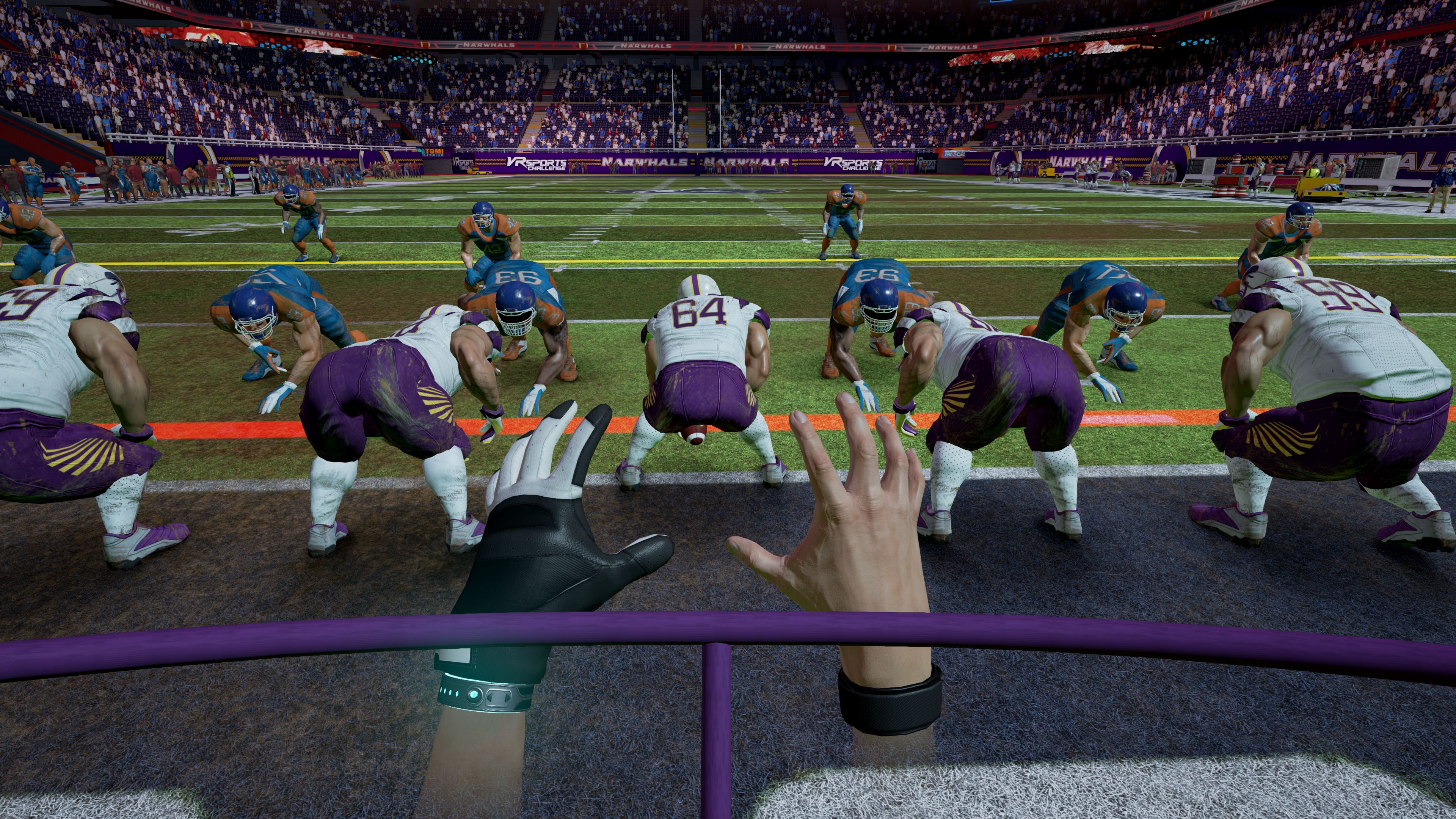
The future of the Oculus Rift and VR in general
Even though you've spent the last few minutes reading the 4,000 words or so I've written detailing how games work, what virtual reality is like and what you can expect from the Oculus Rift if you get one, there's still more to talk about.
Oculus has amazing plans for the Rift. It could very well be the next evolution of Facebook. We might one day hold meetings in virtual reality. I mean, it has a microphone built-in, so there's absolutely nothing stopping Oculus from enabling such a feature next week (and Facebook's Mark Zuckerberg has actually demoed it already).
You might one day use it as a therapeutic tool, letting the hardware transport you to a beach where you can meditate. There are plans to use it as a gateway to music festivals, like South by Southwest and Coachella, as well as live concerts and sports games.
There are even porn companies that are shooting 360-degree videos that you can watch on devices like the Oculus Rift. (If you're into that kind of stuff, we have a great article about it written by my colleagues, Michelle Fitzsimmons and James Peckham.)
I guess what I'm trying to say is that there's a lot of potential here, and once we learn how to tap into it better by becoming native VR users, it's only going to get better.
I'm still not convinced the Oculus RIft is the all-encompassing "future of entertainment" that others have labeled it as, but I'm optimistic that it might earn that title in the coming years, especially as new models arrive.
I've tried to avoid the direct comparison as long as I could, but at this point in the review, I just need to come out and say it: Oculus is a smart, if at times somewhat gimmicky, introduction to virtual reality ... but it's not the best headset on the market.
Even though it pioneered the space, invested millions in developers and development and has a partnership with one of the foremost companies in the world, Oculus can't hold a candle to the HTC Vive, a system with sensors capable of room-scale VR that allow you walk around to naturally explore your virtual space in there.
But, if you're deadset on Oculus, the Rift has similar technology if you're willing to pay a bit extra. An additional Oculus Sensor will give you the ability to get up off of your chair and use your legs as well as your arms and developers will use the new technology to create a slew of more interesting and immersive titles. The Touch Controllers, as we've said in their own dedicated review, are nothing short of fantastic. They feel great in the hand, and improve gameplay tenfold.
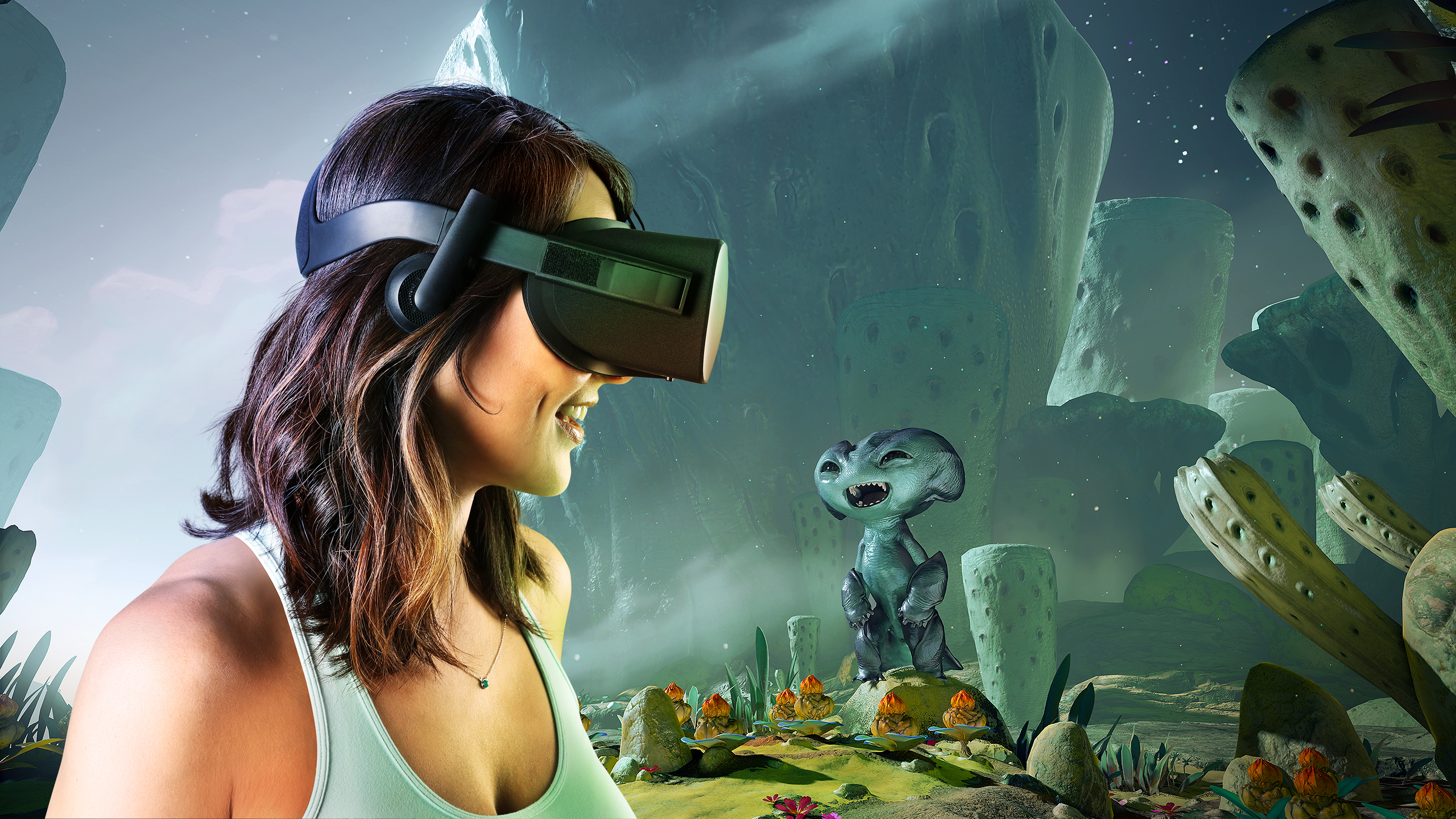
That said, even though it's not the absolute best headset on the market, the story of Oculus is and always will be an awe-inspiring one. Oculus has stuck to its vision, even when those early prototypes were questionable and the demos nearly too laggy to bear. In myriad ways, it was wrought from pure imagination, created an entirely new industry from scratch and built out a platform that could one day fulfill the promises sci-fi films and novels made us when they showed us the Holodeck in its various forms for the first time.
The consumer-ready Rift is a lovely piece of hardware. But it's more than just a pretty headset: Oculus has built a whole ecosystem for its baby, from the sound of the built-in headphones, to the games, to the proprietary Touch Controllers.
As soon as you put on the Rift, you are transported to a whole new world. Touch Controllers, though limited in some ways, will bring the rest of your body along for the ride.
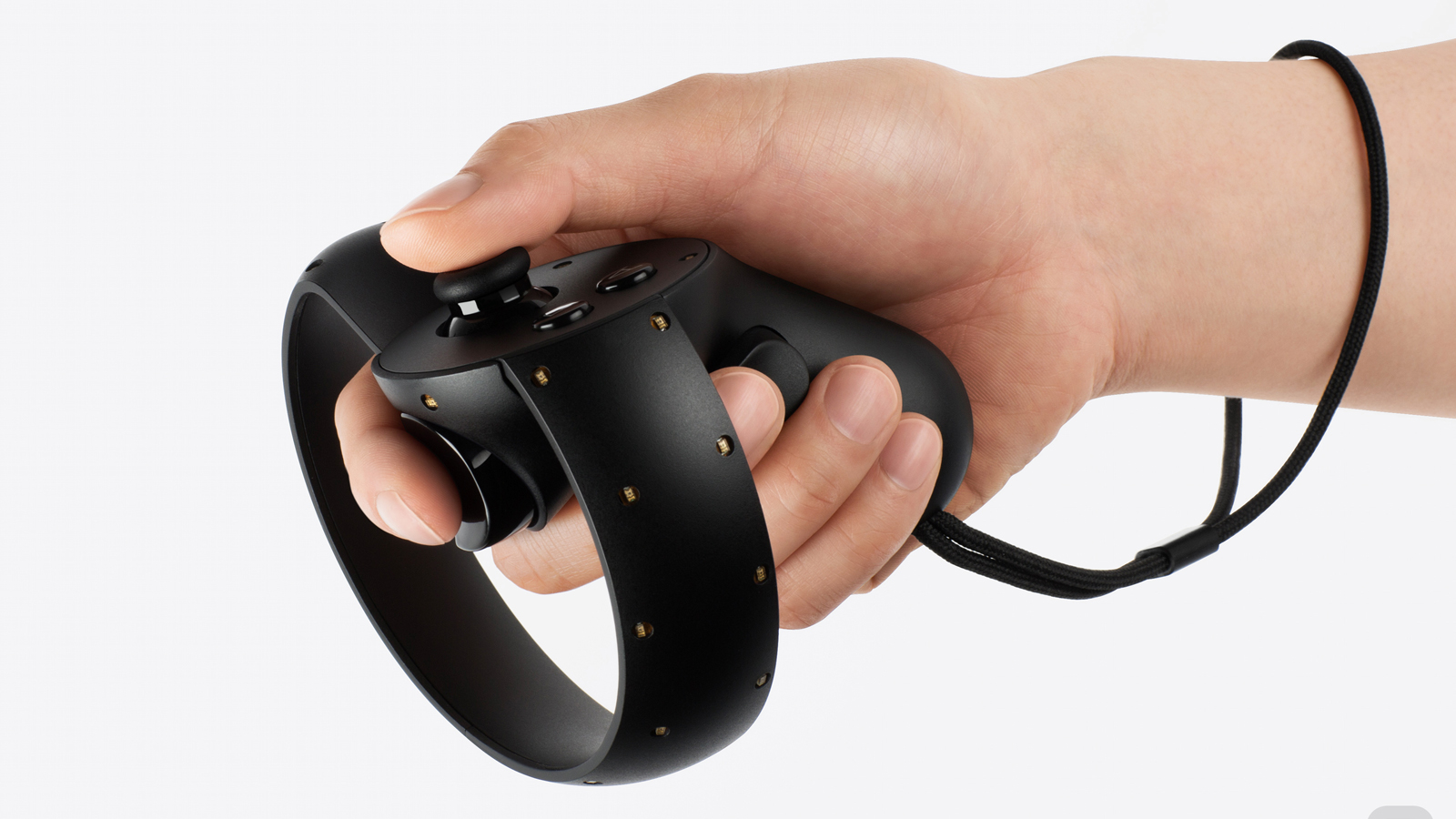
The problem, of course, is everything that's not the Rift, its promises or its current set of games. The price of the whole package is still substantial even given the price drops, and it will likely keep many from jumping to Rift right away.
We liked
The Oculus Rift is an immersive window into dozens of new worlds, and one day it will play host to hundreds, maybe thousands, of such experiences. The games that are there now are absolutely great. Some might induce a bit of nausea for first-time VR adventurers – I'm looking in your direction, ADR1FT – but some will offer an untold amount of happiness.
Seen simply as a game console, the Rift has a lot to offer. Gameplay is fun in short bursts, and the headset is comfortable to wear, even if it hugs you a little too tight sometimes. What Oculus completely understands, however, is that the Rift is more than just a gaming headset. There's already ways to watch 360-degree movies through Facebook, Vimeo and Twitch, and it's not hard to imagine a future where the Oculus Store is brimming with media content.
We disliked
Similar to that used car you've had your eye on, everything on the Oculus Rift comes with a caveat. It's immersive virtual reality... but you need to buy a costly gaming rig in order to enjoy it.
Not to beat the proverbial horse here, but only a small handful of gamers will get to own the Oculus Rift – not because others don't want to, but because it's just out of their price range. Remember, that's after you buy a gaming rig that costs at least $500 to run the Rift.
Finally, while it's not necessarily a negative, the onus now is on developers to leverage the technology and push VR forward.
Oculus has created a realm of new possibilities, but what scares me is that all this technology may fall victim to novelty that will wear off in time should developers decide that designing AAA titles in virtual reality isn't worth their time, effort and money. Without more interesting, eye-catching content, the Oculus Rift is fated for a one-way trip to the cabinet, where it will take up permanent residence next to the Wii and PlayStation Vita.
Final verdict
Back when it had little competition, the Oculus Rift would be an easy recommendation. Virtual reality is a magical experience, and something that I think everyone who loves technology needs to try at some point.
I see huge potential for Oculus down the road as it keeps adding more and more headset options to its roster. But although virtual reality is becoming more and more popular, it remains a nascent medium and therefore suffers from many of the same problems others faced when they were starting out.
The first films weren't Gladiator or The Shawshank Redemption. Art didn't begin with DaVinci or Tiziano. The first songs ever crafted weren't Johann Sebastian Bach sonatas. Similarly, I think Lucky's Tale isn't the end-all, be-all of virtual reality.
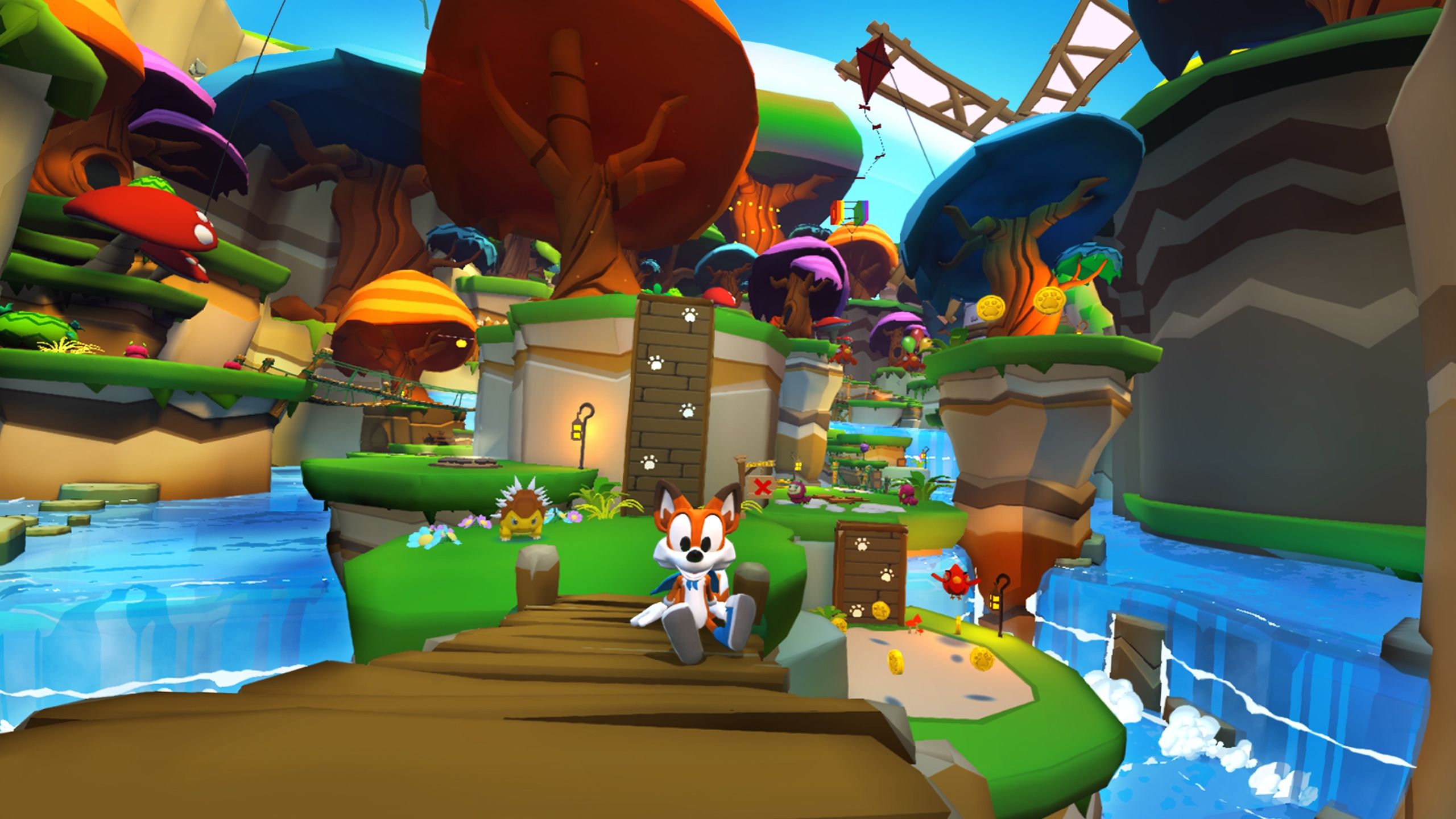
Right now it feels more like a novelty than a tried-and-true necessity. The games are immersive, but not likely to hold you for hours on end. The entertainment is quirky and fun, but also ephemeral.
If you can live with that, the Oculus Rift will make for a fun experiment, one that will only improve over time. But, if you have reservations about committing the monetary resources for the headset and everything that goes with it, it's probably best to hold off a little longer and opt for a standalone alternative, like the Oculus Quest.
0 comments:
Post a Comment